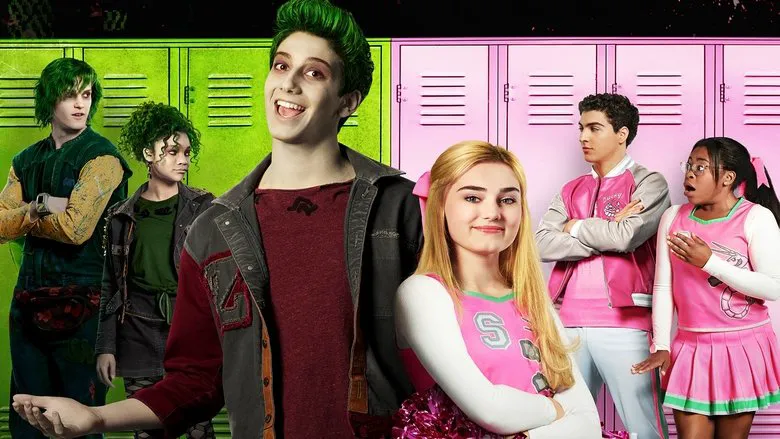The End of a Legend
It’s a common belief that Americans are only interested in themselves, viewing Europe as a mysterious, impenetrable forest and Asia as a vast, untamed wilderness.
Another widespread notion is that “Oscars” guarantee a film’s distribution success. This, too, is a myth. While some Oscar favorites might briefly appear on a few screens and garner some press, this hardly constitutes a successful release.
The idea that Americans lack curiosity conveniently explained our films’ failures abroad – it was their fault, not ours. In recent years, a new excuse has emerged: interest in Russia has waned, replaced by animosity, leading to neglect of our cinema.
However, the success of the Taiwanese film “Crouching Tiger, Hidden Dragon” challenges this notion. Taiwan is hardly a country that has ever captivated American interest, and many Americans would struggle to locate it on a map. Yet, they flocked to theaters to see the film. Claims of Hollywood origins are mere film-critic alchemy; the film is no more American than “Moloch” is German. In fact, “Moloch” is more German, as it’s spoken in German, while “Crouching Tiger” is in Mandarin, forcing American audiences to read subtitles.
 .jpg)
.jpg)
Furthermore, the Italian tragicomedy “Life is Beautiful” achieved tremendous success, despite the fact that the average American is more familiar with pizza than Italian film stars. These examples demonstrate that external factors, such as political enlightenment or Russian oil prospects, cannot draw audiences to the cinema. Only the films themselves can – the complex of ideas, worldviews, images, and talents that resonate with viewers.
The Treacherous Turncoat
The word “resonate” is key here, despite its seemingly frivolous aesthetic connotation. We instinctively distance ourselves from unpleasant individuals, and the same applies to films made by them. I want to emphasize that I am focusing solely on this aspect, not the multifaceted nature of cinema as an art form, the evolution of cinematic language, or other intricate details of arthouse cinema. I am interested in the nature of cinema as a means of communication between people and cultures, and why this channel is chronically clogged with films that are unwanted not only in the distant USA but also in nearby Europe, and even in Russia itself.

The common claim by some filmmakers that they are indifferent to the audience is a deceptive figure of speech. What kind of artist doesn’t need me, but only my money so that he can make another movie for his inner circle? But cinema is not a notebook where you can write a poem “for the drawer”. Cinema is an industry, and there is no industry without a consumer. Even a director who is indifferent to the audience requires considerable money for self-expression. The money is given either by the viewer (which is normal) or by the taxpayer (which is abnormal), but lovers of scattering viewers constantly forget about this circumstance.
Therefore, the viewer naturally forgets about such lovers. The box office forgets - both domestic and global. Even an institution such as the American Film Academy, which is considered the most influential in the world of cinema and film success, forgets. They only value films that people watch. The rest - no.
All films that have managed to cross borders and go into wide release are made for viewers. Western critics appreciate this quality (“Life is Beautiful”, the Brazilian “Central Station”, the Taiwanese “Crouching Tiger”, etc. were enthusiastically received by them); ours, as a rule, grimaces. Now we are scolding Soderbergh for betraying “arthouse” with “the people”. Foolishly.
“We’re Not From Around Here…”
“Resonate” implies comfort. Audiences are accustomed to high-quality visuals and sound. Watery tones and flat, nasal dialogues, characteristic of our films, create a sense of sloppiness, archaism, and poverty. The majority of our films are substandard goods.

Worse, from the perspective of the modern, politically correct world, our understanding of the very purpose of cinema is substandard. We are convinced that the public wants the truth, and we interpret this truth as a striptease, exposing only the unsightly. This began when Perestroika lifted the ban on criticism, and “chernukha” (a genre of bleak, often violent, films) flooded the cinema. More often than not, there was no genuine exposure of societal ills; “chernukha” had a clear commercial slant: crime themes sold well in Russia, and the exoticism of savage customs sold even better in the West. A telling example is Vitaly Kanevsky, a very gifted director who amazed intellectuals with the unprecedented level of truth in his autobiographical film “Freeze, Die, Come to Life.” The film about a prison childhood won a prize in Cannes, and the director, who had suffered from the Soviets, realized that suffering was his capital. His subsequent films were opportunistic, but the outlandish texture carried him for a while, and the director left Russia, hoping for lasting success. The success turned out to be short-lived: people quickly tired of watching the wildness of customs, and Kanevsky had no new ideas.

His fate mirrors that of Russian cinema in the 1990s. It drained the meager well of “chernukha” and continues to do so, even though the source has dried up. “Chernukha” was not a new level of truth; it was the amputated limb of a train station beggar, shamelessly displayed. Such a beggar is given alms, but with disgust – people hurry away. Cinema, on the other hand, must earn money with dignity – so that people rush to come to it.
For those for whom the word dignity sounds too moralizing, I will say it differently: a person with dignity is more pleasant than a person tearing his undershirt on his chest, and therefore his efforts are more commercially effective.
Mysterious East

Here lies the secret to the success of new Chinese cinema, which seems to exist on another planet for Europe and America, yet conquers European and American screens. It has long surpassed us, despite having a less glorious history, and the Chinese mentality is even further from the American than the Russian. It can show life as horrific as it wants, but it always contains human and national dignity. It tells about life without complaining to the world about “unhappy China”, as our cinema does - about “unhappy Russia”, a “God-forsaken” country; its heroes are worthy of love and sympathy. Our “Peculiarities of National Hunt” are frightening: each of the peculiarities goes against generally accepted values. We flaunt what is usually ashamed of. “They” and “we” have diverged fundamentally.
They tell stories – we whine; they cultivate positivity – we nurture criminal consciousness, indulge complexes, and provoke aggression; they are patriots – we believe in neither ourselves nor our own country; for them, political correctness is undeniable – for us, it is an excuse to snarl, and basic concepts of “morality” and “spirituality” are as out of fashion as bras. These are the barriers that separate us more reliably than state borders. As director Boris Ayrapetyan noted at the plenum of Russian filmmakers, our cinema is now a destructive force, not a creative one.
But who wants to deal with convinced destroyers? What madman finds it so pleasant that he will pay money for it?
Kirdyk Means Harakiri
Self-deprecation was supposed to be replaced by an antithesis. At best, “The Barber of Siberia” arose, at worst - “Brother 2”. Both films are primarily ideological. “The Barber” should arouse longing for “Russia that we have lost” and turn minds towards a sweet monarchy. “Brother 2” commercially exploited the xenophobia wandering in the “ochlos” and made it the banner of the crowd. Both options, for all their skill, cause natural dislike in the unengaged viewer. I’m not even talking about the authors’ orientation towards the West they reject: Mikhalkov shoots a picture half in English, Balabanov makes a wretched version of an American action movie. Both tapes want to take “national identity”, but in fact they are cosmopolitan and do not express Russia as “Life is Beautiful” expresses Italy.

Look at the “Oscar” and rating lists - who is in demand? Gladiator, a model of nobility; Erin Brockovich, a fighter for justice; Billy Elliot, stubbornly going to his dream, the new Maresyev Tom Hanks in “Cast Away”, the exposer of health-damaging machinations at a tobacco company from the film “The Insider”, the new Romeo and Juliet in “Titanic”… Heroes are strong, with ideals, you want to deal with them. In our cinema, you can’t find an attractive hero, and even erotica is nauseating. You have to admire either the unearthly junker Tolstoy, who faints at the sight of a woman, or the semi-fascist Danila Bagrov.

“Arthouse” is a special case. It does not count on a large audience and is aimed at the future of cinema, forming new ideas and a new language. But even the future, according to our arthouse, is also dark and terrible. With sometimes outstanding merits, its examples represent the same trend of hopelessly combing wounds, expressing a society that has stopped forever (which is half-true) and masochism as a “peculiarity of the national character”. This is a well-made, but still “cult”.
Black and White Cinema
It is foolish to question the importance of arthouse for art and it does not need protection. But it is already undoubted that the categories basic for mass cinema need protection. I have already said about some. It is necessary to add the malicious word “myth”. There are critics who swear by this word. They should be pitied, as they pity a color-blind person: mythological consciousness in the modern understanding is available only to a person who is able to independently separate the ideal from harsh reality and not confuse operetta with social film drama, measuring everything with one yardstick. Of course, you can hang signs for the incomprehensible: this is a lion, not a dog, but if you focus on color-blind people, the cinema will have to become black and white.

International success accompanies films where, with any exotic texture, there is a common language of ideals. Previously, our cinema was separated from the world by a wall of communist norms, but there remained points of mutual understanding in the best, world-recognized pictures. Now the time has come for rapprochement, and we are like without pants: we have neither ideals, nor norms, none at all. And without norms there are none - they are dictated by a sense of self-preservation: declarations, commandments, laws written and unwritten and all the rest arise, which we confuse with the restriction of freedoms and which in fact is a sign of civilization. Art is a free tree, but it is possible to attribute divine origin to it only in the same myth. A product of human consciousness, it is subject to all its diseases, including a tendency to suicide. You can admire the freely growing jungle of the Amazon, but no one will live there - they will prefer a park area not clogged with thistles. The alternative to human norms is lawlessness. The ship of society can be rocked as much as you like, but art is its gyroscope. Without a clear sense of top and bottom, the vessel will turn over. And everyone around will only be surprised: well, suckers!